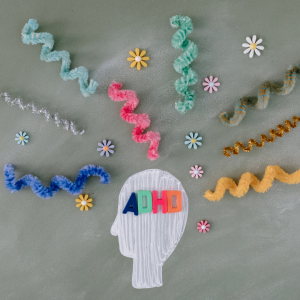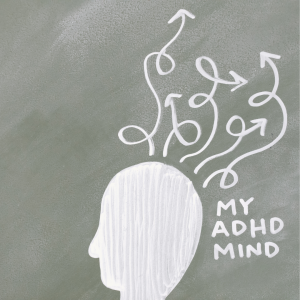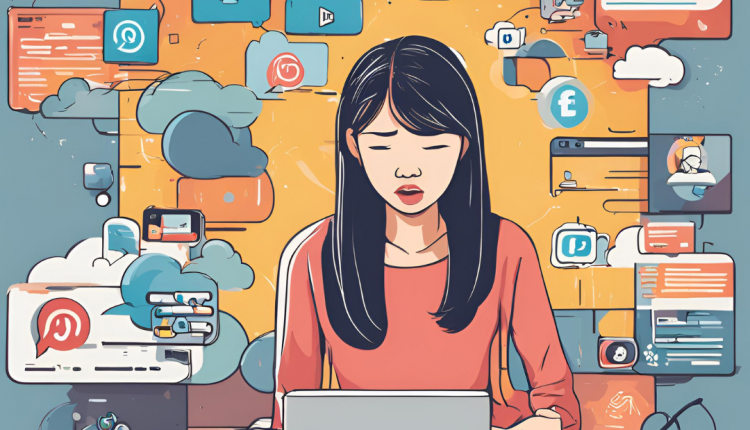Wait… What Was I Doing Again?
Breaking Free from the Social Media Attention Trap
You ever open your phone to check something important, only to find yourself 20 minutes deep into TikTok, scrolling through videos of dancing cats, life hacks, and conspiracy theories? Before you know it, the original task is long forgotten. It’s not just you—this is the reality for millions of us. In a world dominated by notifications, memes, and endless content, holding on to focus feels like trying to catch smoke. Is social media shrinking our attention span? Or is there something deeper going on, like ADHD being supercharged by our digital habits?
Let’s dig in.
ADHD or Just Too Much TikTok?
ADHD (Attention Deficit Hyperactivity Disorder) has been around for a long time, but lately, there has been growing chatter about how social media might be making our attention spans even shorter—whether or not we have been diagnosed with ADHD.
ADHD is a neurodevelopmental disorder that affects a person’s ability to maintain focus, sit still, or control impulses. However, even people without the condition are starting to experience similar symptoms after hours spent scrolling through social media platforms like Instagram and TikTok. It’s not that social media is “giving” us ADHD, but it certainly feels like it’s training our brains to lose focus faster than ever before.
A study published in The Journal of the American Medical Association found that teens who frequently use social media are more likely to report ADHD-like symptoms. That’s not to say that everyone on TikTok has ADHD—but when you think about how these apps are designed to keep you glued to the screen with rapid content, it’s easy to see why our attention spans are shrinking.
How Social Media Shrinks Your Attention Span
Believe it or not, we used to be able to focus for more than a few seconds at a time. According to research from Microsoft, the average human attention span in 2000 was 12 seconds. Not amazing, but still longer than… what’s that? Oh yeah, goldfish. These days, that number has dropped to a shocking 8 seconds—yes, that’s one second shorter than a goldfish’s attention span!
But why?
Every time you open Instagram, scroll through Twitter, or binge-watch TikTok, you’re exposing your brain to a constant stream of dopamine hits. Dopamine is that feel-good chemical your brain releases when you experience something pleasurable—like seeing that you got 50 likes on your latest selfie or stumbling upon a hilarious meme. With every new notification or viral video, your brain gets a rush of dopamine, and over time, it starts craving more and more of those instant rewards.
In fact, social media feeds are carefully designed to give us small bursts of dopamine to keep us hooked. Think about the infinite scroll. There’s no “end” to your Facebook or TikTok feed—you just keep swiping, and the app keeps showing you new content. This constant stimulation is why it’s so hard to pull away after just a few minutes.
The Dopamine Trap
Here’s where things get tricky: when your brain gets used to those constant hits of dopamine from social media, it starts to struggle with tasks that don’t offer such immediate rewards. Ever tried sitting down to read a book or work on a project after a social media binge? Suddenly, these activities feel impossibly dull.

This is because, in a way, social media hijacks your brain’s reward system. Your brain becomes accustomed to the fast-paced, ever-changing content, and when faced with tasks that require long-term focus—like reading, studying, or even having a conversation—it starts craving the quick dopamine hit it gets from checking your phone.
This effect isn’t just about losing focus—it’s about how the brain’s chemistry is rewired over time, leading to deeper issues with concentration, memory, and problem-solving. The more time you spend glued to your screen, the harder it becomes to stay focused on anything that doesn’t offer instant gratification.
The ADHD-Social Media Feedback Loop
Now, for people who already have ADHD, social media can be particularly problematic. ADHD brains are often under-stimulated, which leads people to seek out environments that are more stimulating. Social media is like the perfect storm for that: quick, constantly updated, and full of short, digestible content. The problem is that this fast-paced stimulation makes it harder for people with ADHD to focus on activities that don’t provide that same dopamine kick.
In essence, social media can create a feedback loop for ADHD symptoms. People with ADHD often feel drawn to social media for its stimulating environment, but the constant use makes it even harder for them to focus on everyday tasks, which worsens their symptoms. It’s a bit like trying to quench your thirst with saltwater—tempting, but it ultimately leaves you worse off.
So, Is Social Media Really Making Us All ADHD?
The short answer is: not exactly. ADHD is a complex neurodevelopmental disorder with specific diagnostic criteria. But what social media is doing is pushing our brains toward shorter, more fragmented attention spans, mimicking some of the behaviors seen in ADHD.

Let’s not forget that social media platforms are designed to be addictive. The infinite scroll, notifications, algorithm-driven content—all of these features are crafted to keep you glued to the screen. And this constant barrage of stimuli is rewiring how we process information, making it harder to concentrate on tasks that don’t offer instant feedback.
What About the Long-Term Effects?
Beyond the day-to-day frustration of being easily distracted, what are the long-term consequences of all this? Studies suggest that media multitasking—like switching between apps, watching TV while texting, or scrolling through Twitter during meetings—can actually reduce your brain’s ability to focus over time. Research from Stanford University shows that heavy media multitaskers tend to struggle with filtering out irrelevant information and maintaining attention on a single task.
Additionally, a 2019 study published in JAMA Pediatrics found that teenagers who spend more than 3 hours a day on social media are more likely to experience anxiety, depression, and even loneliness. So not only is social media impacting our attention spans, but it’s also influencing our mental health in more profound ways than we might realize.
The Detox Dilemma: Should We Ditch Social Media?
I know what you’re thinking: “Do I need to throw my phone into a lake and live off the grid to reclaim my focus?” Thankfully, no. The goal isn’t to completely cut yourself off from social media—it’s about being more intentional with how you use it.
Digital detoxes are becoming more popular, with many people swearing by periods of limited or no social media use to reset their brains. A study from the University of Pennsylvania found that reducing social media use to just 30 minutes a day significantly improved participants’ mood, reduced symptoms of anxiety, and even helped with focus. But if going cold turkey sounds too extreme, don’t worry—you can take smaller steps:
- Limit your screen time: Use apps like Forest or StayFocusd to cap how long you spend on social media.
- Turn off notifications: Not every ping needs your attention. Consider muting non-essential alerts, so you aren’t constantly being pulled back to your phone.
- Set specific times for social media: Instead of mindlessly checking your phone every few minutes, schedule times for social media, like during your lunch break.
Digital Hygiene: Your Brain’s New Best Friend
Practicing good digital hygiene isn’t just about turning off your notifications or setting limits; it’s about retraining your brain to focus on the important stuff. It’s about creating a healthy balance between online and offline life. Here are a few strategies to help:
- The Pomodoro Technique: Work in 25-minute chunks, then take a 5-minute break. This method trains your brain to focus without distraction, and those mini-breaks will give you the dopamine hits you crave.
- Mindful consumption: Be more conscious of what you consume online. Curate your feed to follow accounts that bring value to your day and unfollow those that encourage mindless scrolling.
- Active breaks: Instead of scrolling between tasks, go for a short walk, stretch, or practice deep breathing. Even a 2-minute break away from the screen can help reset your mind.
Reclaiming Focus in a Distracted World
So, what’s the takeaway here? Social media isn’t inherently evil, but it does have the power to reshape how we think, focus, and live. The key to a healthy relationship with social media is setting boundaries, being mindful of how we use it, and recognizing when it’s time to take a step back.
Our attention spans may be shrinking, but that doesn’t mean we’re powerless. By taking small, intentional steps, we can break the cycle of distraction and reclaim our focus.
The Future of Focus: Where Do We Go from Here?
As social media continues to evolve, so will our relationship with it. But here’s the truth: your brain is incredibly adaptable. Just as it has learned to crave the dopamine hits from social media, it can also learn to thrive without them.
So next time you feel the pull to check your phone for the hundredth time, pause and ask yourself: Is this helping me focus, or pulling me further into the ADHD loop?
Your attention is valuable—don’t let it slip through your fingers.

